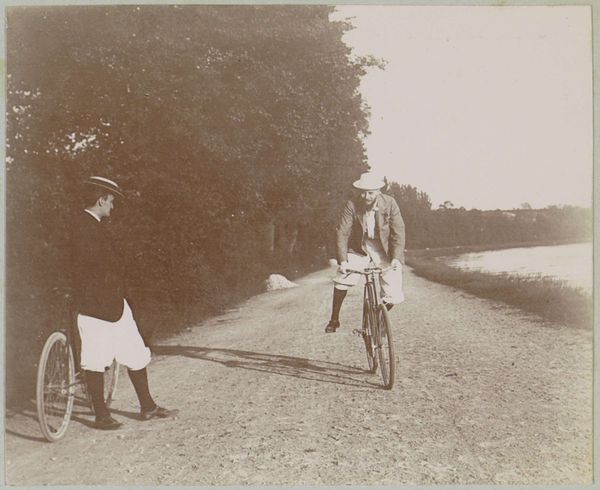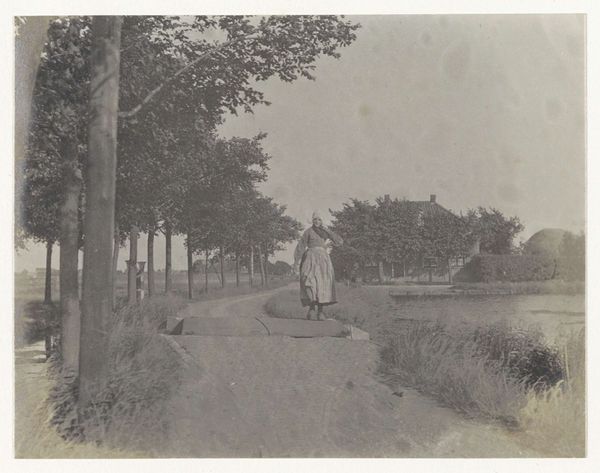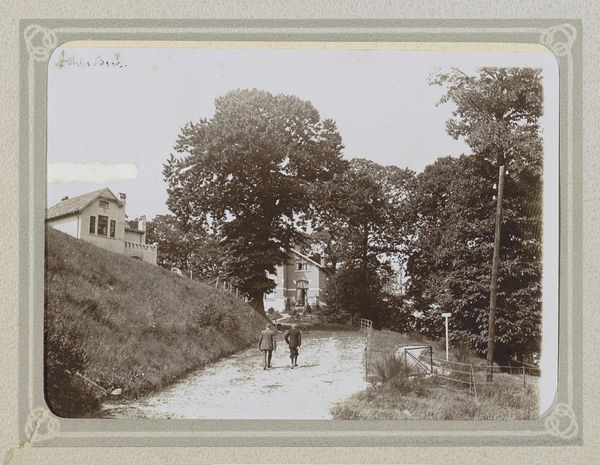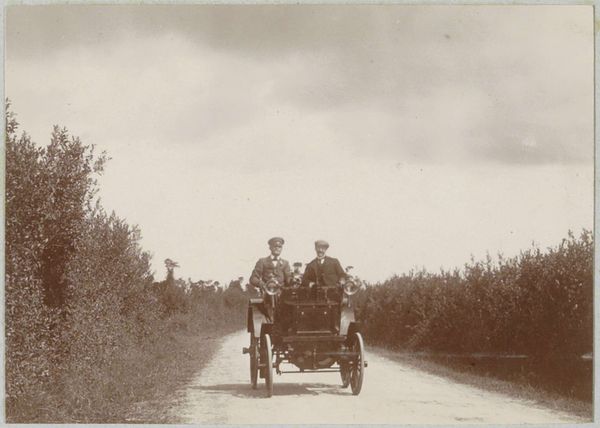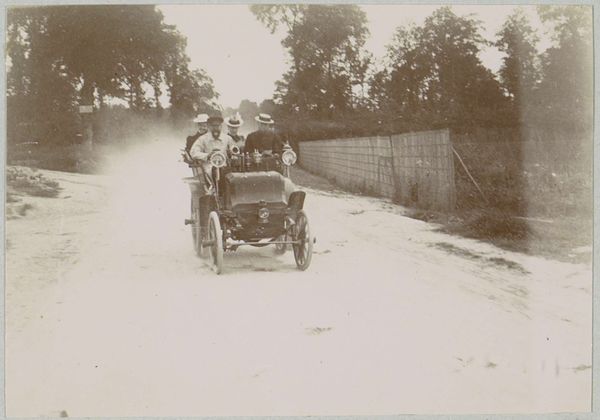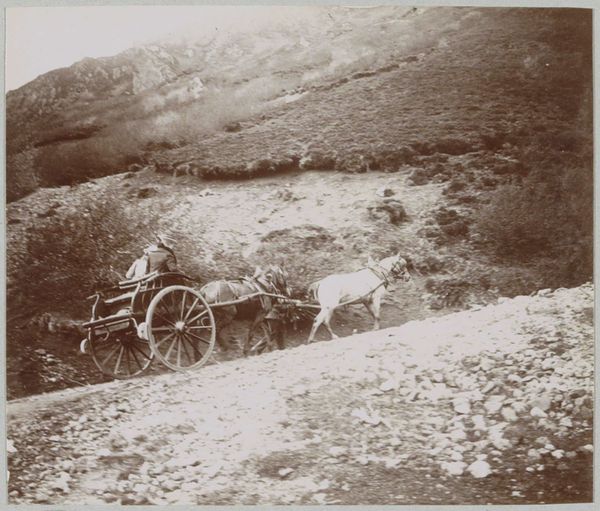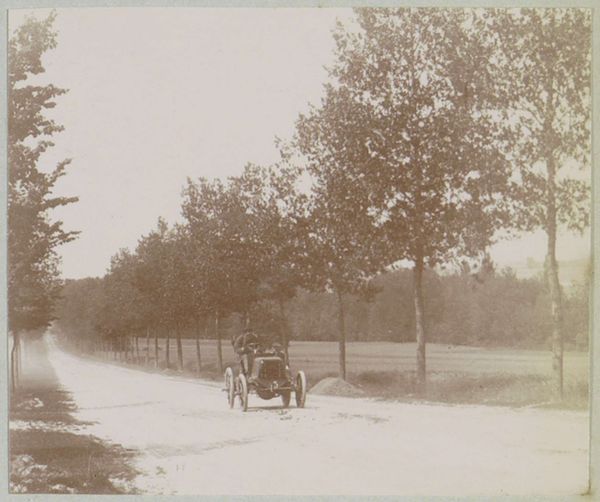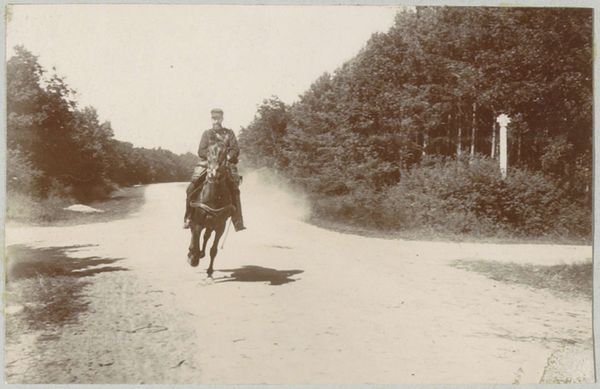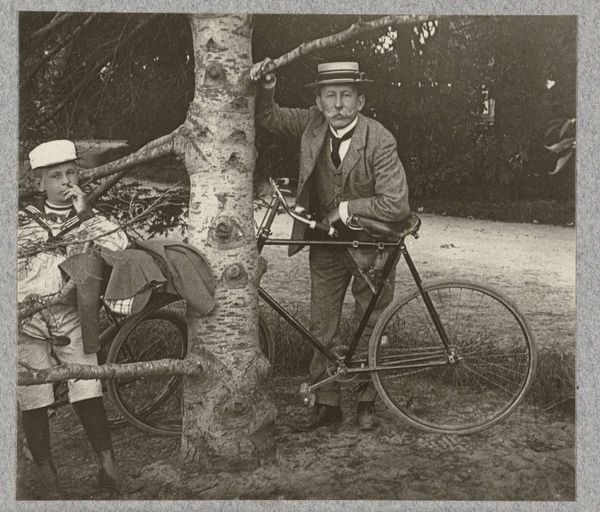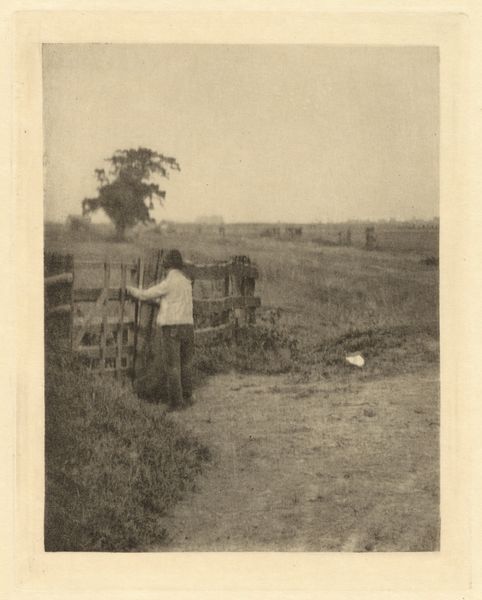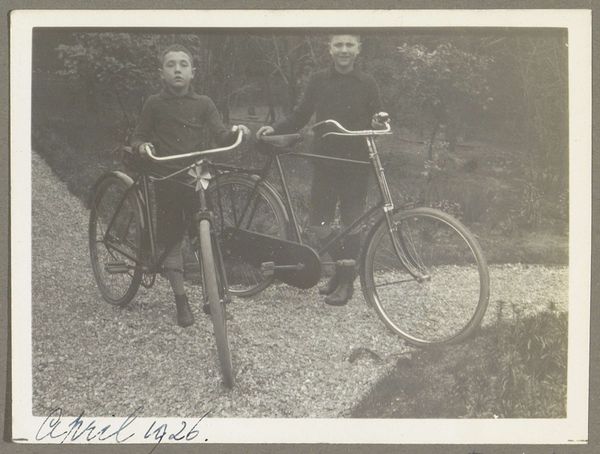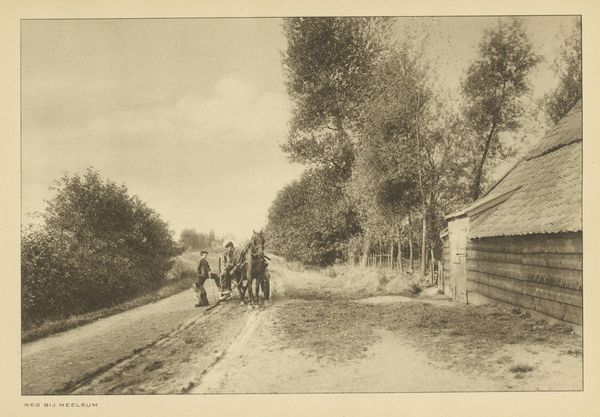
photography
#
portrait
#
tree
#
still-life-photography
#
vehicle
#
landscape
#
outdoor photograph
#
outdoor photo
#
photography
#
realism
Copyright: Public domain
Editor: Here we have Thomas Eakins’s photograph, "Benjamin Eakins and Samuel Murray with bicycles," taken in 1899. The stark, grainy quality gives it such a pensive, almost melancholy feel. It really draws me in. What are your initial thoughts on this piece? Curator: Focusing on the formal elements, consider the tonal range of the photograph: a play of light and shadow creating depth and texture. How does the composition, with its division of space, affect the balance and visual hierarchy? Editor: I notice the contrast between the figures and the background. It makes the subjects really pop despite the monochromatic palette. Is there a symbolic purpose to the bikes? Curator: Semiotically, bicycles represent modernity and freedom, concepts that reflect societal changes in the late 19th century. But the linear forms and circles also provide structure to the composition. What happens if you remove either of the figures? Editor: Removing one of the figures imbalances the scene and loses its equilibrium. What might the textures—of the trees, the road, even the men's clothing—contribute? Curator: Textures introduce varied levels of visual information, leading to a more dynamic and nuanced viewing experience. Notice how the smooth road contrasts with the rough texture of the foliage. Ultimately, through semiotic and structural examination, the photograph exposes layers of form, content, and meaning. Editor: I've certainly learned to appreciate the balance and intention of form here, viewing elements I may have easily dismissed as random or unimportant. Thank you! Curator: Likewise. Approaching artwork through its composition enriches our insight and extends beyond the merely representational.
Comments
No comments
Be the first to comment and join the conversation on the ultimate creative platform.
